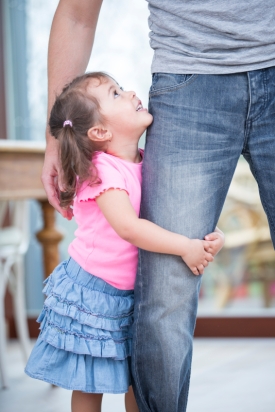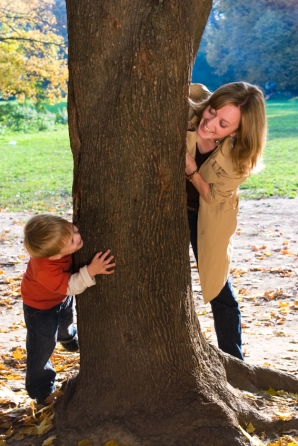Most children experience some type of separation anxiety during infant, toddler and preschool years. The circumstances and ages can vary widely. Some infants become alarmed when held by someone they don’t know, while others are content. A toddler who has been happy in a child care setting begins to cry one day when being dropped off and continues this for the next several weeks. This behavior can be frustrating and concerning for both parents and caregivers. Should parents be worried? How can providers console the child and convince parents that all is well?
There are a few things to keep in mind. Remember that this is a normal stage of development. The concept of going away and coming back is complex and something that infants and toddlers build a gradual understanding of. Comfort your child and work closely with her care provider to look for triggers and patterns to the unhappiness.
 Most children stop crying and settle into normal routines almost as soon as parents have left. Keep your good-byes positive and short – in other words, leave quickly! However, do not leave without saying good-bye…in other words, don’t sneak off! Doing this may seem easier in the short run, but can make the problem worse and last longer. Be sure to give your child a hug, say good-bye, and then leave quickly. Ask your provider to tell you how she dealt with the situation after you left, and ask for her suggestions on how you might help your child transition more smoothly, if necessary.
Most children stop crying and settle into normal routines almost as soon as parents have left. Keep your good-byes positive and short – in other words, leave quickly! However, do not leave without saying good-bye…in other words, don’t sneak off! Doing this may seem easier in the short run, but can make the problem worse and last longer. Be sure to give your child a hug, say good-bye, and then leave quickly. Ask your provider to tell you how she dealt with the situation after you left, and ask for her suggestions on how you might help your child transition more smoothly, if necessary.
While this is a normal stage of development, it is important to monitor your child’s unhappiness and listen to him as well. Has something happened recently that might be stressful for him? A change in family status, a new caregiver, an illness, or even a new child in the child care setting can trigger separation anxiety.
In addition to working closely with your child care provider, the following games might be helpful tools as your child progresses through this stage:
 Peek-a-Boo
Peek-a-Boo
This familiar game support the theme of going away and coming back. There are many variations to the game: you can hide behind your hand, a towel, a blanket, a door, or a tree. Very young children will play this game endlessly. Also look for toys that support this theme. Ideas include pop-up-pals, Jack-in-the-box, and pound-a-ball.
Hide and Seek
This is a more complex version of Peek-a-Boo. A variation on this game is hiding objects for children to find. For example, hide things in playdough, coffee cans, or sand and water and then let the children find them.
Make Believe Play
Look for ways to play out the theme of going away and coming back. Children love to pretend to go to work, to the store, or to Grandma and Grandpa’s house. Join in the play with them. Encourage them to leave as you patiently wait for them to return. Children will incorporate this into doll play, and even in the park and on the playground.
Creative Expression
Artwork and storytelling are excellent ways for children to express their feelings. Let children draw and then tell you stories about their pictures. You can suggest a theme. For example, suggest they draw pictures about how they feel while at school.
Books and Videos
Incorporate books and videos that reflect themes of separation, starting school, and saying good-bye. Have these books available at all times and not just when a child is facing these particular issues. You can point this out while reading the story and can discuss it with your child.
Back to blog listing